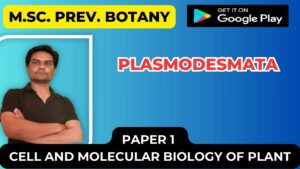![]()
BIOENERGETIC AND CHEMICAL FOUNDATION
ENERGY FLOW
- To perform various task cell require energy to grow, move, synthesis & transportation. In scientific concept energy means capacity to perform work or ability to cause some kind of change to occur.
- For cell to form function energy must flow into cell from its surrounding.
- Energy occurs in different form, cells obtain energy either in the form of organic molecules that contain chemical energy or energy from photosynthetic organisms as photons of light.
- This energy is of two types.
- Kinetic energy deals with motion of molecules, thermal radiation etc. Potential energy is the energy stored in bonds connecting atoms.
LAWS OF THERMODYANAMICS
- Thermodynamics principle helps us to understand about these energy law & their transformation:
First Law –
- Energy can never be created nor be destroyed however it can be transform from one form to another .
- Energy of universe is constant, either change occurs in energy form or it’s physical location.
- Transformation takes place between various forms of energy such as heat, light, electricity, mechanical energy & chemical energy.
- In thermodynamics particular location in which energy changes occurs is reffered as system & rest of the universe is surrounding.
- Energy content of an individual system can be changed, but total energy content of system & surrounding remains constant. In cell 1st law is applicable in the sense that energy is transformed from surroundings & is transformed into those forms which is used by cell, for example in autotrophs, light energy is converted into chemical energy which is essentially used by heterotrophs.
Second Law-
- 1st law does not tells us about the probability that any such process is actually occuring. As a biologist one must like to know the direction of reaction & whether energy is released or absorbed.
- This law states that energy event in the universe occurs in the direction that cause the system & surrounding to exhibit a net increase in randomness i.e Entropy.
- According to second law the Entropy of system & surrounding always increases but this is not true that entropy of individual system always increase.
- It may increase or decrease or remain same .
- Free energy or G (Gibbs).
- Describes the thermodynamic factors that allow us to apply the second law of thermodynamics to a individual chemical reaction without requiring us to measure the entropy change.
- It represents the energy that can be harnessed to do useful work.
- For living organisms where pressure and volume remains constant, the change in free energy that accompanies any biological process is determined by two parameters;
Δ E =total internal energy/ enthalpy
S=change in entropy
G= Δ E – TΔS
ΔS; where G = freeen ergy, T=absolute temperature
If Entropy increases then free energy decrease ;
ie, (ΔS= positive) (ΔG=negative)
(ΔE<0; ΔG<0 ; ΔS>0)
& reactions proceeds in the directions that causes decrease in the free energy of the system i.e Exergenic reactions , i.e they realize free energy (products contains less bond energy ) .
- It indicate the direction of the reactions i.e breakdown of complex organic molecule into simpler one is exergenic reactions .
- If Entropy decreases then free energy increases ;
i.e (ΔS= negative) (ΔG=positive) (ΔE>0);
- Such type of chemical reactions are called as Endergenic reactions.
- Photosynthetic organism are huge, complex,
- Endergenic reactions centers in which ΔG can be made favorable by coupling them to external energy supply i.e light .
- ΔG indicate the direction of reactions.
- Most biological reaction differ from standard condition, particularly in the concentrations of the reactants.
- We can estimate free energy changes for different temperature by using the equation;
- ΔG’=ΔG0′ +2.303RT log(product/reactant) where,
- R=gas constant,
- T= absolute temperature,
- ΔG0’=standard free energy,
- ΔG’= is measure of actual change in free energy, that occurs with a particular mixture of reactants & products at given concentration, the value of ΔG’ thus varies, depending on the conditions involved.
- ΔG0′ is constant under standard conditions.
- It can be calculated under conditions of equilibrium.
If 0is substituted in eq (a)for ΔG’
0=ΔG0’+2.303 RT log(product(eq)) ……….. (a)
( reactant(eq))
ΔG0’= -2.303 RT log(product(eq)………. (b)
(reactant(eq)
Equilibrium constant Keq= (product(eq)) ……….. (c)
(reactant(eq))
Keq can be substituted in eq (b)
ΔG0’= -2.303 RT log Keq ………..(d)
(Equilibrium constant at pH=7)
If ΔG0’= positive, direction of reaction , reactant —–> product,
reaction is exergonic i.e Keq>1 & (product)> (reactant);
If ΔG0’= positive, direction of reaction , reactant <—– product,
reaction is endergonic i.e Keq<1 & (product)< (reactant);
ROLE OF ATP IN TRANSFERRING FREE ENERGY
- One widely occurring pattern involves the use of high energy phosphorylated compounds that release energy when their phosphate groups are removed.
- Such compounds play a key role in transferring energy from thermodynamically favorable to thermodynamically unfavorable processes.
- The most common example of such high-energy compound is adenosine triphosphate (ATP) .
- The structure of ATP and the reactions involved in the removal of its phosphate groups is hydrolysis reaction i.e exergonic, giving adenosine diphosphate (ADP) & a free phosphate group.
- The terminal phosphate of ADP can also be removed in another



